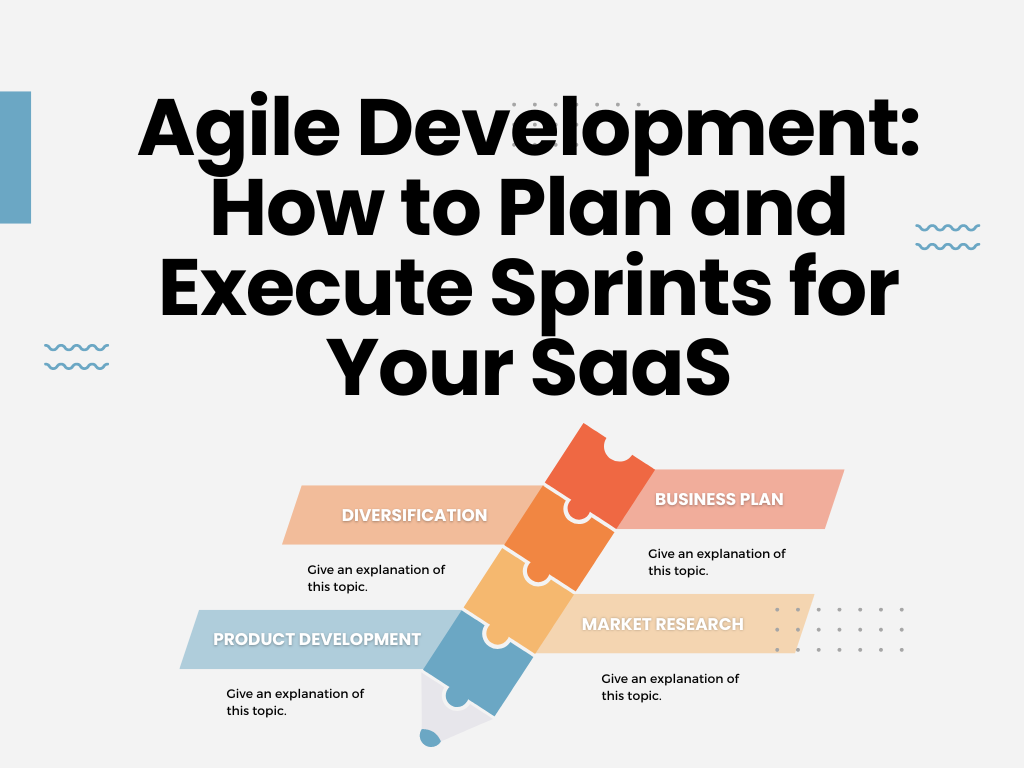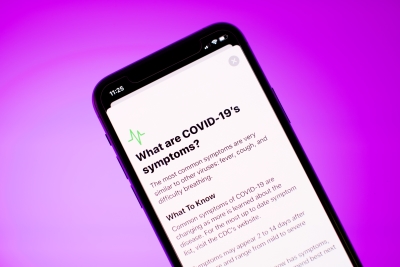The healthcare digital revolution, spurred by data, mobile tech, and AI, gained momentum in the pandemic. Apps track COVID-19, AI aids diagnosis. Beyond, it betters nursing, disease care, resource use, and enhancing health systems. Explore how mobile apps reshape healthcare in this blog.
The global digital health market was estimated to be worth USD 85.06 billion in 2019 and is projected to be worth USD 230.94 billion by 2026, according to the research report "Digital Health Market by Component" (Software, Hardware, and Services), By Technology Digital Health Systems, Tele Healthcare, and Healthcare Analytics. The global market for digital health is projected to grow at a CAGR of 14.9% between 2019 and 2026.
“I think the biggest innovations of the 21st century will be at the intersection of biology and technology. A new era is beginning.”
– Steve Jobs
Empowering Patient Engagement:
Breaking down the barriers that exist between patients and health care is made possible in a significant way by mobile apps. As we already know, mobile applications simplify our lives by facilitating global connections. They also give us the ability to store and conveniently access countless records. The healthcare division benefits from this element as well. In these situations, several apps put health information at your doctor's fingertips, allowing them to retrieve your records in case you ever require emergency medical attention. it genuinely could save your life. Furthermore, programmes have made it simpler to track and monitor your health. They can monitor your heart rate, blood oxygen levels, daily step total, and even the number of calories you burn.
Almost two-thirds of Internet users used the Internet to search for health information (64.9%), searching for information about doctors and medical services (63.4%), or searching for a medical facility (65.3%).-A National Web-Based Cross-Sectional Survey among Adults in Poland.
Revolutionizing Medical Diagnostics:
As we learned earlier mobile apps are helping patients and doctors as well to better treat health issues. In addition, today the apps have revolutionized the medical diagnosis process by making it easier and faster than ever before. Here are some specific examples of how AI is revolutionizing medical diagnostics:
- AI-powered microscopes can identify cancer cells with greater accuracy than human pathologists. This is leading to earlier diagnosis and treatment of cancer, which can improve survival rates.
- AI-powered algorithms can detect signs of Alzheimer's disease from brain scans years before symptoms appear. This could lead to earlier treatment and prevention of the disease.
- AI-powered wearable devices can monitor a patient's vital signs and track their progress over time. This can help to identify changes in health status that may indicate a developing disease.
- AI-powered chatbots can provide patients with information and support about their medical conditions. This can help to reduce the burden on healthcare providers and improve patient satisfaction.
Let’s check some applications that are making medical diagnoses available on your mobile phones.
- HealthTap: HealthTap is one of the top-rated medical apps on the Google Play Store. It enables you to get in touch with doctors 24/7.
- Ada: The AI of the Ada app compares your responses to its medical dictionary, which contains thousands of illnesses and conditions. You get a personalized assessment report that outlines what might be wrong and what you can do moving forward.
- WebMD: It provides those who want knowledge with useful health information, health management tools, and assistance.
As technology advances and enhances our lives in better and more effective ways, our future is changing day by day. Additionally, the health sector is rapidly improving in terms of speed, accuracy, and accessibility. Even the diagnosing procedure has been made easier and faster recently.
Telemedicine:
Using information technology and communications to deliver medical care remotely is known as Telemedicine. It makes it possible for medical staff to consult with and treat patients who are in distant locations frequently without requiring them to leave their homes or travel to a facility for treatment. Telemedicine has a wide range of applications including:
- Virtual Care: For non-emergency care, such as a sinus infection, flu, headache or sore throat patients can use telemedicine to consult a physician.For those who live in remote areas where access to hospitals and doctors is difficult this is a very practical and favourable opportunity for them.
- Mental health care: Telemedicine is being used to deliver mental health services such as treatment and counselling. People who live in remote areas find it difficult to commute to see a therapist. This helps them to communicate without leaving their homes and get the help they need.
- Chronic care management: Telemedicine can be used to help treat and monitor diseases like diabetes or high blood pressure by regularly monitoring the patient’s vital signs through calls or apps that are made to check pulse rate etc
- Education and training: Telemedicine can be used to provide education and training to healthcare professionals. This can include continuing education courses, as well as training for new healthcare providers.
- Research: Telemedicine can be used to conduct research in healthcare. This can involve remote monitoring of patients, as well as video or phone consultations with researchers.
Some telemedicine apps are quite popular which you can check out to help you in any circumstances regarding your health or your loved ones.
- MDLIVE: It allows you to connect to adult and pediatric doctors and access behavioral health therapy services and psychiatry whenever you need them.
- Lemonaid: The Lemonaid app offers a simple way to get a diagnosis and receive treatment.
- LiveHealth: It brings qualified doctors to you whenever you need them.
Personalized Wellness and Fitness:
Personalized wellness is a method of promoting health and well-being that takes into consideration each person's particular needs, objectives, and preferences. It makes individualized exercise and health tracking plans, as well as well-being plans, using data and technology. Personalized wellness can be used to track fitness and health in the following ways, as examples:
- Your heart rate, sleep patterns, and steps can all be monitored by a fitness tracker. Using this information, you may design a personalized exercise programme that is catered to your unique needs and goals.
- You can monitor your nutrition, weight, and blood pressure with a health app. You can use this information to develop a tailored nutrition plan that will assist you in achieving your health objectives.
- A training professional can evaluate your state of fitness and design an individual training programme that is both safe and efficient for you.
- You can set reasonable health objectives with the help of a health coach, who will also offer guidance and assistance as you go.
Medication Management:
Taking your prescriptions as your doctor has instructed is known as medication management. You can stay on top of managing your medicine schedule with the use of digital tools and services, such as adherence programmes, record-keeping applications, and reminders to take your medications.
You can improve your medication management in addition to using digital tools by consulting your doctor about your medication requirements, creating a medication schedule, keeping your medications in a secure location, and ensuring you have enough medication on hand to last until your next refill. For mental health, medication management might be difficult. Many apps and online tools, including those for emotional well-being, stress relief, and support networks, can help with medication management for mental health conditions.
The Future of Healthcare Apps:
Healthcare apps will become more personalized, remote, and virtual. They will use data and analytics to create personalised treatment plans, track health data remotely, and provide access to healthcare providers from anywhere in the world.
1. Integration of AI and Predictive Analytics
- AI and predictive analytics will be used to develop new diagnostics, treatments, and preventive measures that are more effective and personalized than ever before.
- AI will be used to automate tasks, diagnose diseases, personalize treatment, and predict disease risk.
2. Envisioning a Holistic Health Ecosystem
- The future of healthcare is holistic. It is about more than just treating diseases. It is about promoting health and well-being at all levels, from the individual to the community.
- A holistic health ecosystem would integrate physical, mental, and social health. It would also incorporate traditional and alternative medicine.
The future of healthcare is bright. By integrating technology, AI, and predictive analytics, we can create a holistic health ecosystem that promotes health and well-being for all.
Success Stories:
Here are some examples of healthcare apps that have driven positive health outcomes and improved quality of life for users:
- DiabetesMine is an app that helps people with diabetes manage their condition. The app provides users with access to a community of other diabetics, as well as educational resources and tools to help them track their blood sugar, medication, and diet. A study published in the journal JMIR Diabetes found that users of DiabetesMine were more likely to meet their blood sugar goals than those who did not use the app.
- QuitSure is an app that helps people quit smoking. The app provides users with personalized coaching, support groups, and mindfulness exercises to help them stay on track. A study published in the journal PLOS One found that users of QuitSure were more likely to quit smoking for at least six months than those who did not use the app.
- Headspace is an app that provides guided meditation and mindfulness exercises. The app has been shown to improve mental health symptoms such as anxiety and depression. A study published in the journal JAMA Psychiatry found that users of Headspace were more likely to report a reduction in symptoms of anxiety and depression than those who did not use the app.
For custom software development, visit us at Zee Palm
For free premium front-end flutter kits, visit Flutter Coded Templates
Check out free Flutter Components, visit Flutter Components Library








